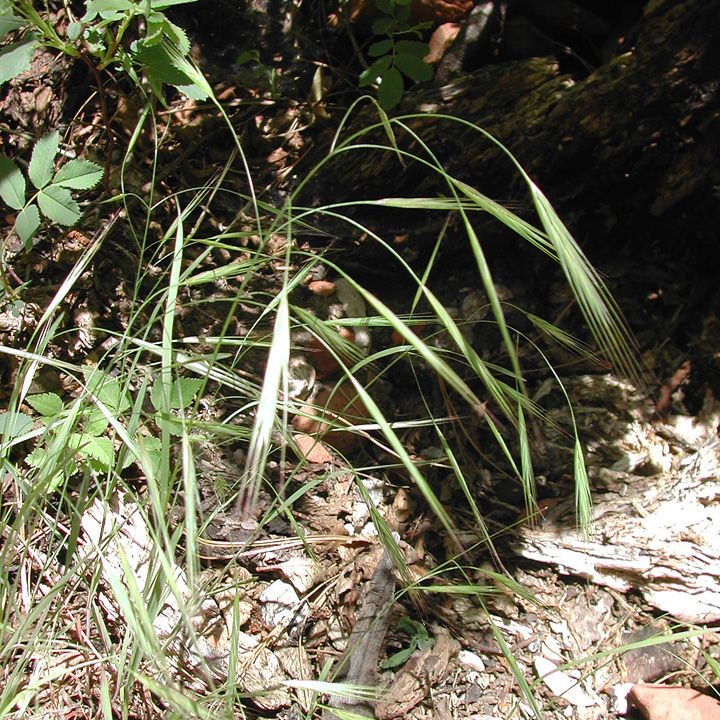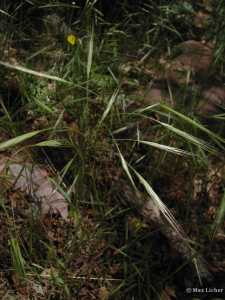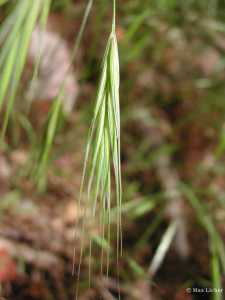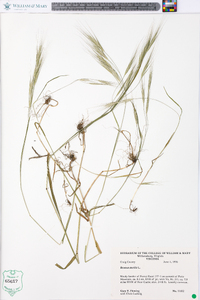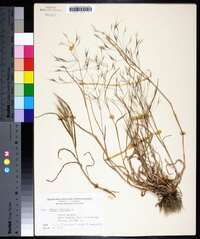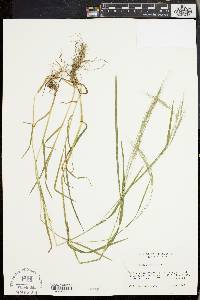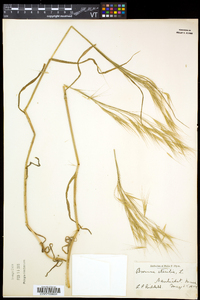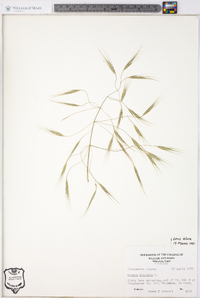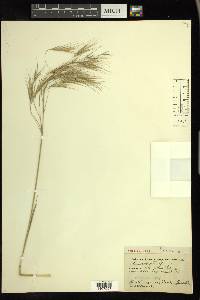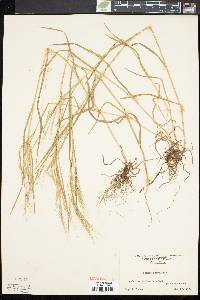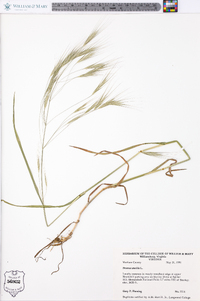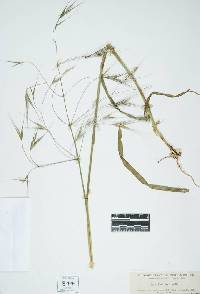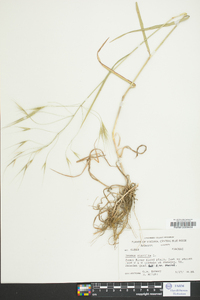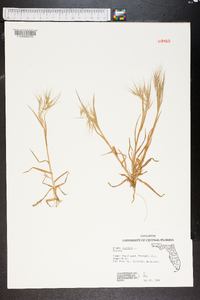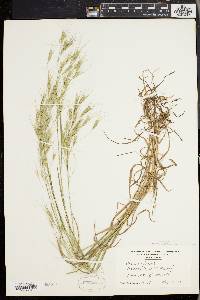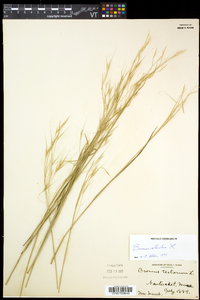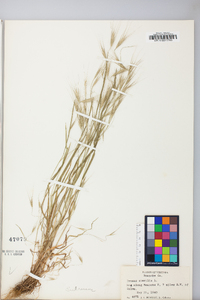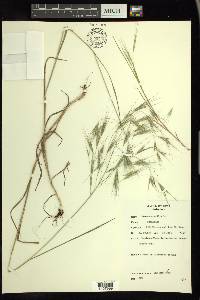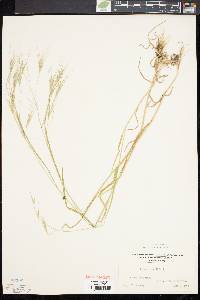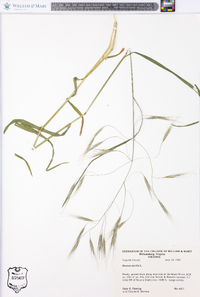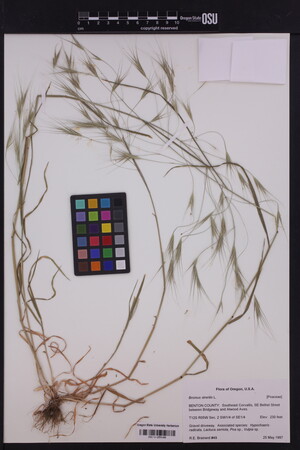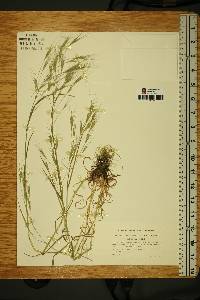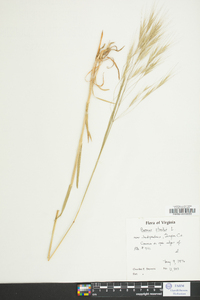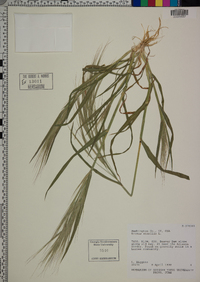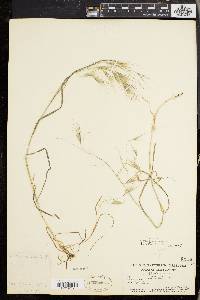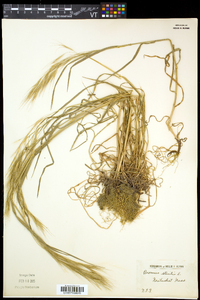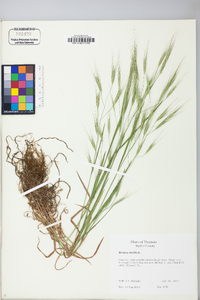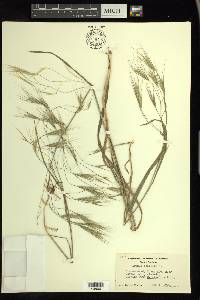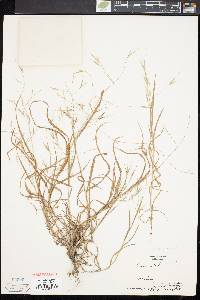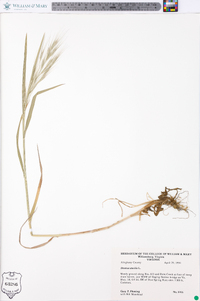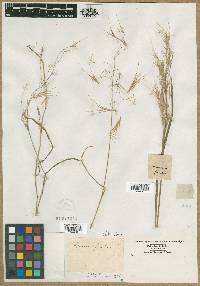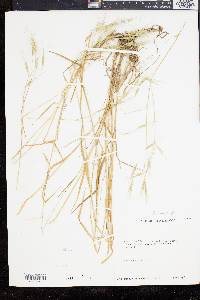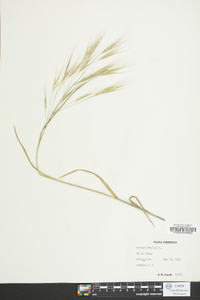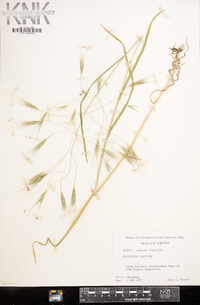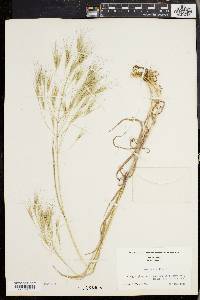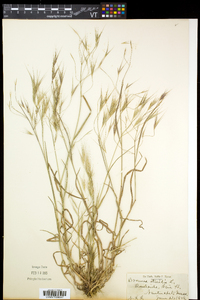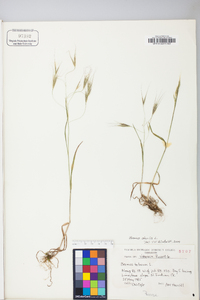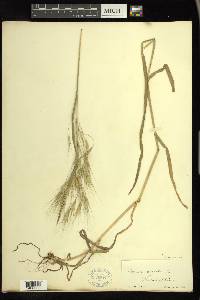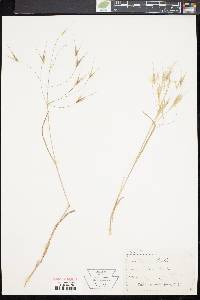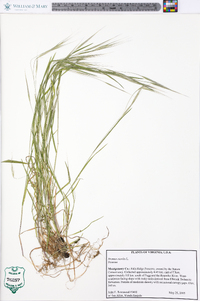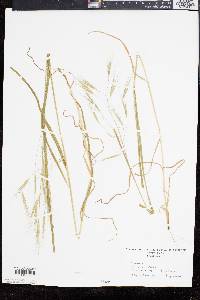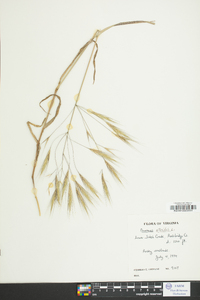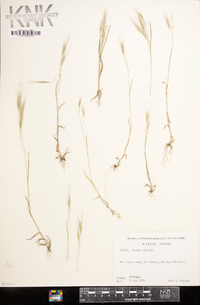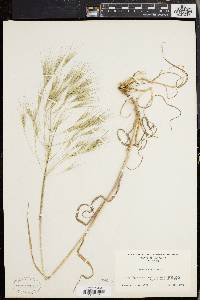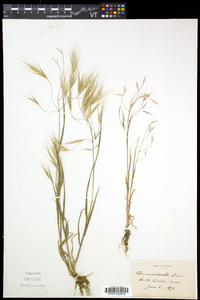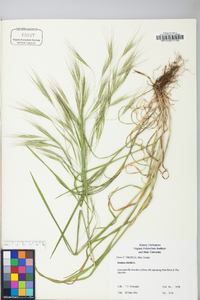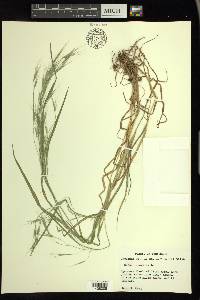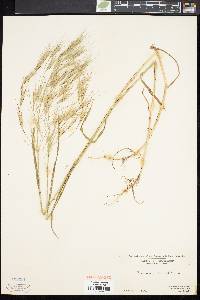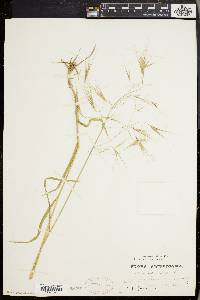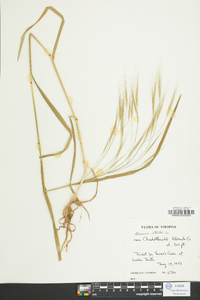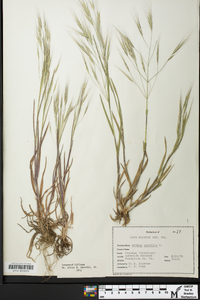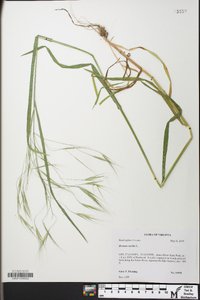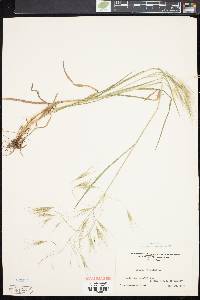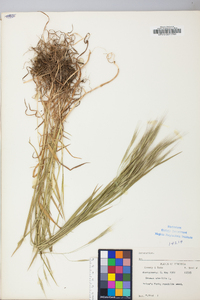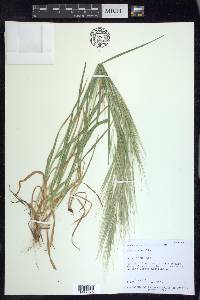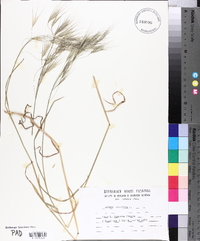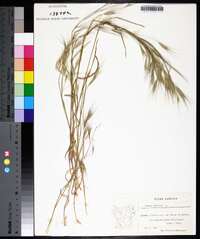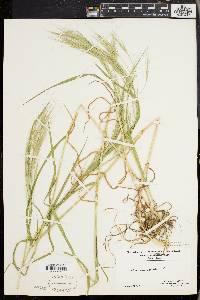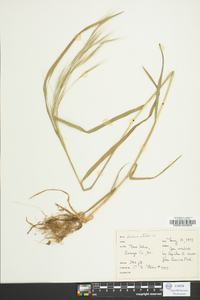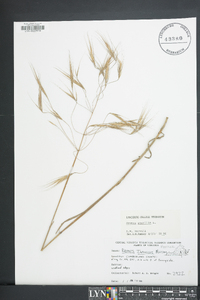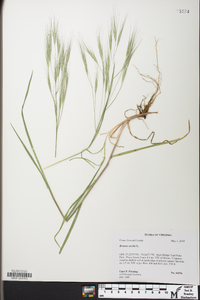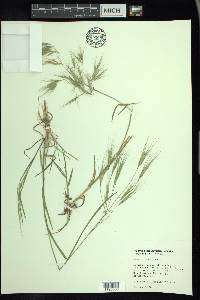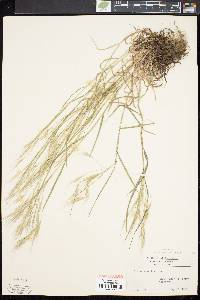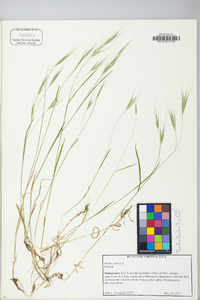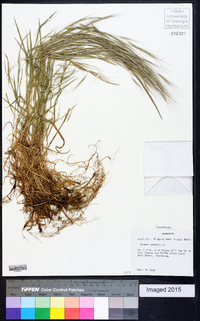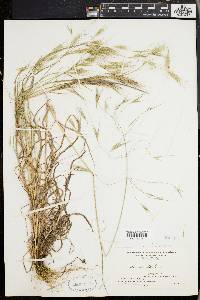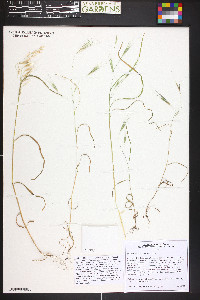Bromus sterilis
|
|
|
|
Family: Poaceae
Poverty Brome, more...barren bromegrass, sterile brome, Barren Brome
[Anisantha sterilis (L.) Nevski, moreBromus grandiflorus , Bromus jubatus Ten., Schedonorus sterilis (L.) Fr., Zerna sterilis Panz. ex B.D. Jacks.] |
Plants annual. Culms 35-100 cm, erect or geniculate near the base, glabrous. Sheaths densely pubescent; auricles absent; ligules 2-2.5 mm, glabrous, acute, lacerate; blades 4-20 cm long, 1-6 mm wide, pubescent on both surfaces. Panicles 10-20 cm long, 5-12 cm wide, open; branches 2-10 cm, spreading, ascending or drooping, rarely with more than 3 spikelets. Spikelets 20-35 mm, usually shorter than the panicle branches, sides parallel or diverging distally, moderately laterally compressed, with 5-9 florets. Glumes smooth or scabrous, margins hyaline; lower glumes 6-14 mm, 1(3)-veined; upper glumes 10-20 mm, 3(5)-veined; lemmas 14-20 mm, narrowly lanceolate, pubescent or puberulent, 7(9)-veined, rounded over the midvein, margins hyaline, apices acuminate, bifid, teeth 1-3 mm; awns 15-30 mm, straight, arising 1.5 mm or more below the lemma apices; anthers 1-1.4 mm. 2n = 14, 28. Bromus sterilis is native to Europe, growing from Sweden southward. It now grows in North America in road verges, fields, waste places, and overgrazed rangeland. It is widespread in western and eastern North America, but is mostly absent from the Great Plains and the southeastern states. FNA 2007, Utah Flora 1983, Jepson Herbaria-Berkeley Common Name: poverty brome Duration: Annual Nativity: Non-Native Lifeform: Graminoid General: Introduced annual 35-100 cm tall, with a small leaf blade and a spreading inflorescence to 25 cm long, drooping on the lower portions. Vegetative: Blades 4-20 cm long, 1-6 mm wide, pubescent; stems 35-100 cm, solitary or in small tufts, erect and sometimes bent at the lower nodes, glabrous; sheaths densely pubescent; ligules 2 mm long, glabrous. Ecology: Found in disturbed sites along roadsides, fields, and overgazed rangeland, at elevations below 6000 ft. (1830 m); flowers March-June. Distribution: Found in western and eastern states; generally not found in the Great Plains and in the Southeast. Notes: Is native to Europe, and is considered a noxious weed in the western and eastern United States. Ethnobotany: Unknown Etymology: Bromus comes from Greek bromo for stinking, while sterilis means sterile. Editor: LKearsley 2012 Annual 4-10 dm, the culm usually glabrous, but the sheaths and blades usually soft-hairy; blades 2-4 mm wide; ligule 1.5-2.5(-3.5) mm; infl relatively long, 1-2 dm, open, the elongate, capillary, often drooping branches mostly bearing only one or 2 spikelets, these mostly 25-31(-36) mm (to 5 cm incl. the awns), 4-8-fld, glabrous to strigose-puberulent; glumes subulate, the first 7-14 mm, 1-veined, the second 9-17 mm, 3-veined; lemmas very narrow, 13-18(-20) mm, 0.8-1.2 mm wide in side-view, 7-veined, the pair of veins nearest the midrib developed only distally, the outermost pair only proximally; awns 18-30 mm; palea almost equaling the lemma; anthers 0.9-1.6 mm; 2n=14, 28. Native of s. Europe, intr. in fields and waste places in much of the U.S., including most of our range. Gleason, Henry A. & Cronquist, Arthur J. 1991. Manual of vascular plants of northeastern United States and adjacent Canada. lxxv + 910 pp. ©The New York Botanical Garden. All rights reserved. Used by permission. From Flora of Indiana (1940) by Charles C. Deam Our only report of this species is of a colony which I found along Tanners Creek about a half mile southeast of Guilford, Dearborn County. It was well established here along the roadside. ...... Indiana Coefficient of Conservatism: C = null, non-native Wetland Indicator Status: n/a Deam (1929): Sunce thus grass is probably injurious to grazing animals or avoided by them, on account of the scabrous nature of the florets, it should be regarded as a weed and exterminated wherever it is found. |

